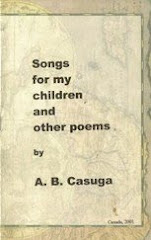PART 7 LITERARY CITICISM: CRITICIZING (TECHNIQUE) FICTION
--- WHAT IS AN EFFECTIVE PLOT?
The plot, as a series of actions in the story, is the backbone of any tale. Grandma’s tales have always been riveting because they would always answer the question of the toddlers gathered around her knees: What happened, abuela? What’s going to happen next? And then…
No story has escaped this essential requirement. Hence, if there is action, there must be a sequence articulated by the author in the order that achieves “verisimilitude’ (art imitating life or a slice of life objectified in the art work.)
Order and Arrangement of Actions. The actions in the plot would be more believable if they were arranged in such a manner that there would be clarity, continuity, drama (there is reasonable pitting of conflicting motivations and interests among the characters), and causality.
The exposition must be situated in the story so as to give a narrative background of the inciting force or initial action. It may occur in the beginning of the story prior to the initial action, or it may be in a narrated past event (flashback), depending on whether or not it succeeds in giving adequate background for any action that demands explanation so that this may become relevant to the story.
The inciting action (initial action) must be reason enough to cause the ensuing conflicts which form the substance of the story. Since it is the principal cause of the drama, it must be significant enough to trigger succeeding actions. This is a measure of its effectiveness.
The complications or conflicts must result from variance of interests among characters and forces which figure in the story. They must be dramatic in such a way that a problem which cries for a solution or conclusion arises. Conflict is usually characterized by interest, suspense, and dramatic opposition among forces. These must conform to the nature of the characters and the demands of the plot so that it (plot) may make the subject matter believable.
The turning point is said to be effective if it reaches a level of interest which promises a decisive change in either the action or the characters. This change must provide the solution to the problem which has reached a fever point in this critical level of the story. It is the promise of a change which makes the discovery in the climax significant. Otherwise, without this change, there would be no story, there being no movement.
The climax is the resulting action which is caused by the conflicts and promised in the turning point. It is the change in the story. It concludes the movement of actions. It is said to be effective when it is the logical conclusion that naturally follows from the nature of the conflicts; and it provides a convincing and significant transformation of things in the story.
The denouement or resolution is deemed effective if it succeeds in levelling off the fever-pitch of emotion that has been aroused through the pace of the story. It should explain the effect of the change on the situation or on the characters. An effective denouement may also provide an explanation for the turn of events from the initial action through to the climax.
The narrative is usually arranged chronologically. It may sometimes be arranged in medias res (the story begins in the midst of actions and goes back to the causes of the action which may even become the climax).
Logical order may take the form of the story starting from the conclusion or climax and going back to the details or causes of the finale; or vice versa.
Psychologically, the story may be arranged according to the thought patterns of the characters or the author. (For instance, in “The Sound and the Fury" by William Faulkner, the story of the degeneration of the Compson family was told through the different streams-of-consciousness of the idiot, Benjy, and his brother, Quentin. In J.D. Salinger’s “The Catcher on the Rye,” the episodes are arranged according to the memory patterns of Holden Caulfield, the principal character).
That order which best suits the demands of the subject matter is said to be effective. For instance, if the subject matter is a step-by-step description of the commission of a crime as in “The Cask of Amontillado”, the author is expected to relate the story in the order in which the steps happen. In this manner, the reader may feel as if he is himself performing the perfect crime. Because of this, the story assumes greater believability and emotional effect.
Next: Part 8 Literary Criticism: Criticizing (Technique) Fiction --- Effective Characterization (Types and Methods).
Hunger Wakes Me
-
In the hours between midnight and morningI dream of shadowed hills, the
scent of night-blooming datura spilling over our old home.What was the
question tha...
2 hours ago











No comments:
Post a Comment